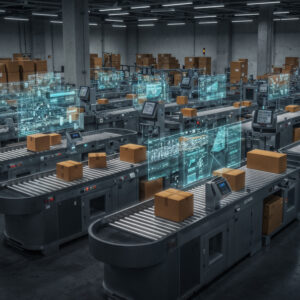Driven by emerging economies, humanity has encountered the unprecedented urban growth as people are more than ever living in megacities worldwide. Estimated by the World Health Organization, all the major cities around the globe are being added with approximately one million on top of the populations they have already had, and nearly two-third of the world population will end up living in those major cities by the year 2030.
According to KMPG’s Foresight, rail is increasing viewed as an essential form of public transportation – both as a required complement and viable alternative to private modes such as cars. While this may be nothing new in some parts of the world, notably Europe and Japan, the real change is the scale of this shift. Both long-distance and urban rail are now rapidly becoming the preferred transportation of business and leisure passengers all over the world.

(Source: World Health Organization)

(Source: World Health Organization)
One-Size Does not Fit All
According to PWC Singapore, there are different models of railway projects which can be built to serve a country’s public transportation needs. Selecting the right mode is a key decision for governments and transport authorities. Certain modes of rail transport naturally lend themselves to certain situations; however, governments should rigorously evaluate the different modes against each other. The evaluation must balance the competing pressures of cost and quality, and consider all relevant factors including technical feasibility, the local environment, the transport problems that the project is designed to tackle, and the overall budget for the government. The modes, for example, are Monorail, Light Rail, Metro, and Long distance/High speed rail.
Rail-Based Transportation in Asia
Asia is seeing rapid growth and urbanization, and there is an increasing need to develop transport services. Railway is a viable option to meet the demand for urban commuting as well as long distance travel. There are a number of railway projects in development or construction, representing billions of dollars in investment and spending.
To illustrate, Thailand has been undergoing multiple MRT lines construction in Bangkok. Its ambitious aim is archive high speed rail network. In Malaysia, Electric Double Tract Project is being implement, and the Klang Valley Mass Rapid Transit is about to start in 2017. Moreover, Malaysia and Singapore have jointly approved the High Speed Line project between Singapore and Kuala Lumpur, and the Rapid Transit System link between Johor Bahru and Singapore is schedule to kick off in 2018. In Taiwan, Kaohsiung Light Rail has operationally started since 2015. In Hong Kong, MRT is in the process of delivering five new projects. These include the West Island Line, The South Island Line (East) and the Guangzhou – Shenzhen – Hong Kong Express Rail Link.
Vietnam has currently no city MRT systems in operation but the networks are now being developed in both Ho Chi Minh City and Hanoi. In the Philippines, The Department of Transportation and Communication has award LRT 1 Cavite Extension Project while other multiple projects are now under development including further LRT extensions and a 900KM Integrated Luzon Railway. Last but not least, as for Indonesia, Jakarta MRT is now under construction and phase one operation planned to start by 2018, Jakarta Monorail is being developed, and Hatta Airport Express Link is underway. Many urban transit rail projects planned for several cities – Bali, Bandung, South Sumatra, Surabaya and Surakarta, and High Speed Line from Jakarta to Surabaya and Bandung has been proposed.
Take-Home Message
Public transportation operators and government authorities in emerging ASEAN countries face sizable challenges in providing public transport for commuters. They need to improve their transport infrastructure and the reliability of services, which will help boost commuter satisfaction. According to Accenture’s Public Transportation analysis, ASEAN transport operators have greater scope to introduce complex systems that can integrate commuter preferences with information systems on buses and trains, e-ticketing, road sensors, and traffic and weather data. These systems can help operators better address the needs of commuters.
Nowadays, commuters are able to see how public transport networks around the globe operate and they are demanding greater levels of control, accessibility, reliability and comfort from their local transport options. How can governments and operators overcome some of these entranced challenges and deliver higher quality public transport services? The answer is not necessarily more trains or more roads. Instead, operators should consider how technology can be used to effectively balance supply and demand using existing resources, in an environment where commuter needs and transport conditions can change by the minute.





